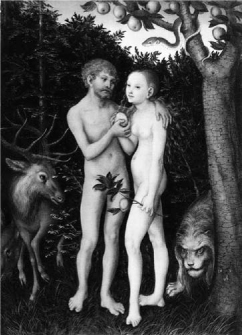The World MythTricksters |
What is the significance of the trickster in the world myth? |
The trickster is the divine representation of a state of being between early childhood and the attainment of the self-control necessary for civilized communal life. He is creative, but he has uncontrollable appetites and is amoral. In mythology, tricksters can take any shape, using these disguises to achieve their often reprehensible goals. In creation stories tricksters sometimes become devils, as in the case of the biblical Serpent. Tricksters can work against the creator, undermining his creation and representing the deep dualistic nature of the world, the eternal struggle between good and evil, day and night, life and death. Or they can be simply playful, as in the case of Hermes stealing Apollo’s cattle. The Norse trickster, Loki, is a constant source of disturbance in creation and does a great deal to bring about the end of the world.

In the biblical story of the Garden of Eden the Serpent serves in the role of the trickster (1531 painting on beechwood by Lucas Cranach the Elder.)
